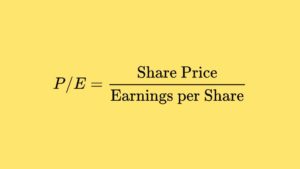The medium to long-term outlook of the Indian markets remains highly optimistic. Only risks are fresh war in Asia, or solid recovery in the global economy which could lead to a bubble in crude oil prices. Otherwise, domestic markets would recover once again within 2023. An unfavorable result from the State elections could possibly derail it but the domestic market is expected to do very well post the General Election in 2024
After hitting a life-time high of 63,538 in December 2022, the Sensex fell over seven per cent from its record high. However, the overall market cap of all stocks listed on BSE fell by over Rs.27 lakh crore (by 10 per cent) from its record high level of around Rs.287 lakh crore to Rs.260 lakh crore now. The hit in the small cap segment is much severe – a vast number of small cap stocks have fallen by anywhere from 20 per cent to as high as 50 per cent from their respective 52-week highs.
Continued elevated inflation and interest rate hikes in most major economies on the global front, and on the domestic front, subdued financial performance of corporate in Q3FY2023, hit in market sentiments due to severe fall in Adani stocks and continued selling of Indian equities by the FIIs have led to significant fall in the domestic equities.
Now worry is whether the domestic markets will recover significantly in the remaining period of 2023 or whether the bearish phase will continue till the results of 2024 General Election results come out. Yes, it is quite possible for the domestic markets to remain subdued till 2024 elections, if the balance 5 states – especially from the two major states viz., Karnataka and Madhya Pradesh – election results go against the ruling party and therefore, if the market expects uncertain mandate from the 2024 General Elections. Otherwise, the domestic market is likely to recover back in 2023 itself and the Sensex could give around 10 per cent return from the current levels by the end of 2023.
This conviction comes from the following facts or propositions: –
Most major economies in the world have already crossed the mid-points, by big margins, in the interest rate cycle. Within one or two quarters, the rate cycle would peak out due to significant weakening of economic growth and commodity prices. The GDP growth of almost all major economies is already revised downwards. Goods exports have slowed down in the majority of the economies. Crude oil prices are down 35 per cent from 52-week highs. Metals are down up to 18 to 39 per cent from their respective 52-week highs. Moderation in inflation is already visible in some economies.
India’s Story Still Remains Robust in Relative Terms
Even with downward revision in GDP growth, India is still expected to be fast growing major economy in the world. The IMF says that India and China will contribute more than half to global growth in 2023. Of course, goods exports have decelerated recently, rupee remains weak, FDI inflows have fallen and forex reserves have declined quite significantly. However, many macroeconomic parameters remain favorable in India:
- GST collections remain robust;
- Though goods exports are declining, India’s service exports maintain a robust growth of 30 per cent yoy which is helping in mitigating the overall Current Account Deficit of India;
- Both Kharif and Rabi crops are expected to be good;
- Banking credit growth remains roust at 16.5 per cent yoy, which is decade high;
- Budget has proposed 33 per cent increase in capital expenditures;
- The flow of NRI deposits rose 76 per cent yoy to $5.4 billion in April-December 2022 period;
- Unemployment rate in urban areas declined to 7.2 per cent during October-December 2022 from 8.7 per cent a year ago;
- Healthy competition among major States to achieve a $1 trillion economy continues. Many major States compete with each other to attract investments. For instance, the UP government reportedly has got investment commitments to the tune of Rs.33 lakh crore;
- The Asian Development Bank pledges $25 billion for the next 5 years to fund India’s infrastructure creation;
- Weak oil and metal & mineral prices along with robust crop output would help the Indian economy to moderate inflation within a quarter or two;
- India’s imports from Russia have jumped about five times to $37.31 billion during April-January period of FY2023 – being priced cheaper, this steep imports from Russia continues to help India in reducing its oil import bill;
- India’s exports to the UAE, with which India has implemented a free trade agreement on May 1 last year, is expected to cross $31 billion during FY2023;
- Certain economic initiatives / focus by the government are highly positive for the economy – initiatives like PLI schemes, promotion of ethanol use in automobiles, thrust on mobile phone manufacturing and on electric vehicles, increase in import duty on gold, electrification of Railways (a 100 per cent electrification was mooted in 2017 and now the share of electrified tracks has increased from 40 to 85 per cent now), etc. are making or likely to make significant favorable impact on the domestic economy.
- India’s fuel demand saw the sharpest rebound in February as petrol & diesel consumption rose by double digits
Short-term macroeconomic concerns are unlikely to last longer
The weakening of rupee, evolving global political relationships and growth opportunities could ultimately bring back growth in the FDI inflows.
Though India’s goods exports decelerated recently, India’s services exports jumped 49.1 per cent yoy in January 2023, which further helped India’s overall trade deficit to narrow to $1.27 billion in January, the lowest in 19 months.
A significant part of the dip in forex reserves is on account of sale of dollars by the RBI to support rupee exchange rate. This falling trend could taper off once the rupee stabilizes. Thanks to hike in import duty on gold, there has been a 76 per cent yoy fall in gold imports in January 2023. During April-January period of FY2023, gold imports fell by 27 per cent yoy, which is a major positive development on the external economic front.
Of course, Q3FY2023 results of over 2,700 companies – excluding banks and financial sector – reveal a worrisome fact that while combined sales grew by 17 per cent yoy, combined net profit declined by 14 per cent yoy. Still, we can take comfort from the fact that sales are growing at decent double digits and there is pressure only on margins mainly due to input inflation. However, with expected moderation in inflation and also the ultimate ability of the corporate to pass on the cost hike, we should see corporate profits coming back to significant positive growth within 2 quarters.
WPI inflation hits a 2-year low of 4.73 per cent in January 2023. Of course, Retail inflation hit a 3-month high of 6.52 per cent and breached the RBI target in January 2023. However, going forward, with steep fall in oil and metal prices, also with the help of base effect and good crop output, retail inflation should moderate.
The number of registered investor base on the BSE platform continues to grow – over 5 lakh new investors register on the BSE platform every week. The overall registered investor base has increased to 12.60 crore. The predominant growth of the retail investor base would ultimately minimize the risk coming from the FIIs to the domestic markets.
Global Pain, India’s Gain
We saw substantial global pain thrice in the last 15 years – Lehman crisis 2008-2009; early 2016 deflationary conditions and 2020 Covid pandemic. In all three phases, the Indian market also fell badly. However, the bounce in the Indian equities was huge post these global pains. India always gains from global pains in the form of cheap oil and metals & minerals, and therefore, gets the benefits of steep moderation in inflation, conservation of forex reserves and recovery in rupee exchange rates (which in turn pull back FDIs FII inflows). This time also we believe that India would achieve net benefits out of global pain as it depends heavily on imprinted crude oil. In all past episodes of global pains, oil prices cracked badly and helped the Indian economy and markets. This time too, the same story would repeat if global pain continues.
Thus, the medium to long-term outlook of the Indian markets remains highly optimistic. Only risks to our markets are any possible fresh war in Asia, or solid recovery in the global economy (along with cartelization efforts of OPEC) which could lead to a bubble in crude oil prices. Otherwise, domestic markets would recover once again within 2023.
Any possible unfavorable results from the State elections could possibly derail the markets in 2023. But such a possible fall would be a great opportunity for the investments as the domestic market is expected to do very well post the General Election in 2024.
























